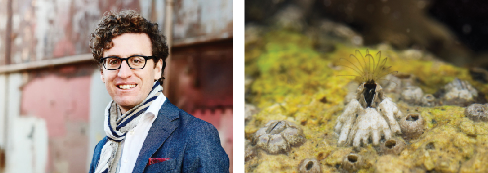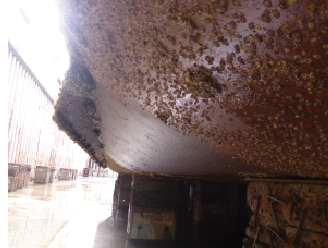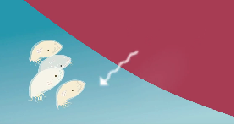ETC Barnacle-repelling biotechnology in big demand at South Korean shipyar…
페이지 정보
작성자 최고관리자 댓글 0건 조회 2,628회 작성일 19-11-15 16:57본문


A symptom of warming oceanic temperatures, the growth and accumulation of living organisms on the surfaces of submerged ship hulls, a process known as ‘biofouling’, is increasing. Biofouling intensity varies from region-to-region and from season-to-season, under the influence of numerous environmental factors. Many of the World’s major shipyards are located in temperate or subtropical climate regions designated as ‘biofouling red zones’, where the risk of biofouling accumulation is high.
Ships laying idle during the outfitting process at shipyards located in these red zones are at risk of intense biofouling, particularly barnacle fouling which occurs when ships are stationary. The presence of barnacle fouling on a ship hull can have great impact on a ship’s performance during sea trials, or when the barnacles are removed by mechanical means, the process can have a detrimental effect on the antifouling coating. Therefore, in recent years, demand for antifouling coatings that prevent barnacle growth while a ship is static for extended periods of time during the outfitting process have been in high demand.
“Our product is boosting the performance of sophisticated antifouling systems under harsh fouling conditions, such as those experienced during outfitting at shipyards in South Korea. Selektope® is clearly adding value to the coatings products that the major coating manufacturers offer.”

Swedish biotechnology company I-Tech AB has reported that sales of their organic, non-metal active agent Selektope®, a barnacle-repelling substance added to antifouling coatings during the manufacturing process, to South Korea are at an all-time high. In fact, South Korea is their largest market by far.
Selektope® puts any barnacle larvae looking to attach to a ship’s hull into temporary swimming mode, rendering them unable to attach. This desired effect is achieved by the science of selective receptor stimulation. When the barnacle larvae approaching the hull surface are exposed to Selektope® being released from the antifouling coating, their octopamine receptor is switched on, making their swimming legs kick much faster, at up to 100 kicks per minute. The effects of Selektope® are reversible, once outside of the Selektope® exposure zone barnacle larvae return to normal function. However, while exposed to Selektope® barnacle larvae have no option but to swim away and find another place to settle.
With an efficacy that requires just 0.1% concentration per wet weight of paint, approximately 2grams of Selektope® is required per litre of paint. Therefore, this technology allows coatings suppliers to use just a fraction of the active substance needed to achieve comparable performance to traditional copper-based biocides or alternatives.
This first-of-its-kind antifouling technology caught the attention of coatings suppliers in the early stages of its research and development. The number of Selektope®-containing antifouling coatings for outfitting and for up to 60-month drydock cycles being sold by different manufacturers, including Chugoku Marine Paints and Hempel, is increasing year-on-year.
Philip Chaabane, CEO I-Tech AB, says: “Our product is boosting the performance of sophisticated antifouling systems under harsh fouling conditions, such as those experienced during outfitting at shipyards in South Korea. Selektope® is clearly adding value to the coatings products that the major coating manufacturers offer.”
In January 2018, I-Tech AB, responded to strong market demand from South Korean shipyards and global ship owners for the antifouling ingredient by appointing KhaiEL as the exclusive importer and agent for Selektope® for South Korea. I-Tech AB have also successfully scaled up the production of Selektope® with the establishment of robust manufacturing platforms that allows them to produce the active substance in multiple tons scale to support increasing demand.
■ Contact: http://i-tech.se












